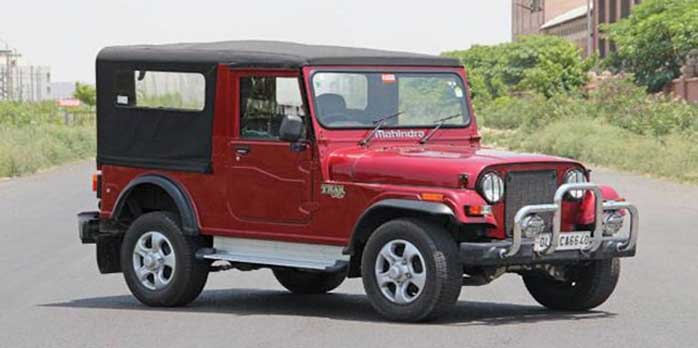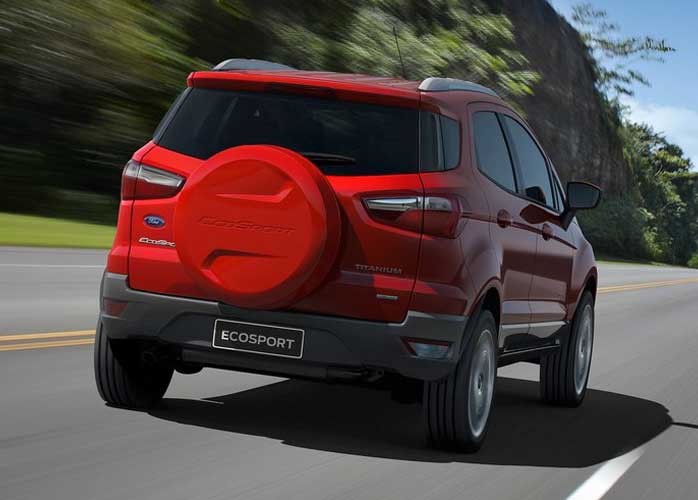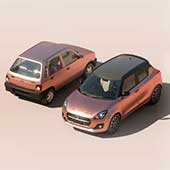Introduction

The beginning of the 2010s started with the return of the Mahindra MM Series Short Body Jeeps, re-introduced as the Thar. The Force Gurkha followed suit. Mahindra aggressively started advertising a club full of Mahindra owners who were enthusiastic about going the trail roads. The catchphrase went “Live Young. Live Free!”
In the 2 wheeler world, Hero had just introduced the Impulse, a mini dual sport adventure motorcycle. The introduction of the Royal Enfield Classic meant the craze for long-distance riding only grew intense.
Then, in Bollywood, Singham appeared turning a Mahindra Scorpio and a Mahindra Classic in the same movie, with obnoxiously stylish stunts. It was brilliantly done.
In 2012, the 4x4 wars had just shifted a gear above. The Tata Aria, a vehicle which looked like a van, can handle rough terrains like an SUV and is advertised as a larger alternative for sedans. Then came the Mahindra XUV 5OO, with a lot of features that would make the interior of a Toyota Fortuner look spartan. It had a monocoque architecture, and that meant it would drive like a car.

Mahindra Thar
(Image source)

Tata Aria
(Image source)

Mahindra XUV 5OO and Skoda Yeti, two of the most innovatively designed Crossover SUVs
(Image source)
Anil Kapoor rocked the 24 series in a newly launched Tata Safari Storme, with the tagline “The Real SUV.”
The Renault Duster and Ford EcoSport came around the same year, and would eventually change the Indian automotive scene for years. SUVs need not require to be big, slow and a rugged alternative to a minivan anymore. The stigma was broken.
Before this SUVs were always positioned to be above sedans in terms of stature. They were expensive to purchase and maintain. But the fact that people could now enjoy the benefit of sitting at a higher position, having a rugged, fuel-efficient vehicle and appearing as a high-status user without adding to a huge amount of purchases meant that the small car needed to undergo a change in its architecture.
And thus, compact crossovers were born. Crossover, as in the cross between an SUV and an urban car. The formula was simple, make an economy car with high seating, and good space and exude a rugged look.

Tata Safari Storme
(Image source)

Renault Duster and Ford EcoSport
(Image source)

The hugely successful sub 4 m compact crossover SUV segment
(Image source)
2011 - Honda Brio
The Brio introduced a rear glass door which makes for another quickly identifiable design. The little hatchback’s rear design has influenced many designs which are commercially successful today.
The taillamps have an aftermarket feel due to the transparent clear lens treatment and are one of the rarest designs along with the taillamps of the Chevrolet Beat.

Honda Brio Front Three Quarter View
(Image source)

Honda Brio Front Three Quarter View
(Image source)

Honda Brio Rear Three Quarter View
(Image source)

Honda Brio Side Profile
(Image source)

Hyundai i20 rear view, very similar or inspired from the Brio
(Image source)

Tata Altroz rear view, very similar or inspired from the Brio

Honda Brio rear view
(Image source)

The Honda CR-Z may have perhaps inspired the Brio’s rear design
(Image source)
2013 - Ford Ecosport
The Ford EcoSport was the first time a Stepney was put in a hatchback, which also provided an SUV rivalling ground clearance. It was marketed as a compact SUV, and hence kicked off a new variant of the SUV segment. A new sub-4 m SUV segment was born.
Although the first hatchback to provide a Stepney at the rear was Premier Rio, it was never commercially successful and hence failed to influence design evolution in hatchbacks, unlike the EcoSport.

Ford EcoSport front three quarter view
(Image source)

Ford EcoSport Front Three Quarter View
(Image source)

Ford EcoSport Rear Three Quarter View
(Image source)

Ford EcoSport rear three quarter view
(Image source)

Ford EcoSport Rear Three Quarter View
(Image source)
Premier Rio was launched nearly two years prior to the EcoSport but it wasn’t as commercially successful. The EcoSport turned out to be a blockbuster, and then in the same year, the Fiat Urban Cross was unveiled, to have a similar Stepney, by due coincidence.
The Stepney attached to the EcoSport is a distinguishing factor for the vehicle itself. This makes the EcoSport instantly recognizable.

Premier Rio Rear Three Quarter View
(Image source)

Fiat Urban Cross Avventura rear three quarter view
(Image source)
2013 - Volkswagen Cross Polo
The Polo Cross was essentially a variant extension with body-side claddings to imitate the stance of an SUV. It was the first of its kind, to later be followed by the Toyota Etios Cross, Ford Freestyle, Maruti Suzuki Celerio X and Tata Tiago NRG.
The claddings are a part of its rugged identity and are aimed at the niche audience who are a bit enthusiastic about weekend offroad trials.
The Polo Cross was influential in terms of influencing other manufacturers to make cross SUV variants of their hatchbacks.
Across various hatchback segments, there are now crossover versions of the same.
And thus began the sub-groups of the cross-hatchback segment of today.

Volkswagen Cross Polo front view
(Image source)

Volkswagen Cross Polo Front Three Quarter View
(Image source)

Volkswagen Cross Polo Rear Three Quarter View
(Image source)

Volkswagen Cross Polo Side Profile
(Image source)

Toyota Etios Cross Side Profile
(Image source)

Volkswagen Polo Cross Side Profile
(Image source)

Hyundai i20 Active Side Profile
(Image source)
2014 - Datsun Go Plus
The Datsun Go Plus remains as the only 3- box hatchback along with the Renault Triber in production. It was essentially a stretched version of the Datsun Go.
The Datsun Go Plus still presents itself as a micro-utility vehicle, but it is essentially a Datsun Go with bigger boot space. The seats at the rear are unusable even for small kids, and the vehicle is best used as a mini-estate car.

Datsun Go Plus front three quarter view
(Image source)

Datsun Go Plus Front Three Quarter View
(Image source)

Datsun Go Plus Rear Three Quarter View
(Image source)

Datsun Go Plus Side Profile
(Image source)
2015 - Renault Kwid
The Renault Kwid is a sub-compact hatchback with a ground clearance of above 180 mm. This proved to be a boon for economy car buyers who have always wanted a smaller car which can handle bad roads easier than Altos and Indicas.
The Kwid has always presented itself to be an SUV for the budget conscious. But yet, Renault has never mentioned “SUV” as the expectation of an SUV is to have ample space, robustness and toughness, which isn’t possible in a budget car. The success of the Renault Kwid led to the influence and creation of the micro SUV segment dominated by the Kwid itself and the Maruti Espresso.

Renault Kwid front three quarter view
(Image source)

Renault Kwid Front Three Quarter View
(Image source)

Renault Kwid Rear Three Quarter View
(Image source)

Renault Kwid Side Profile
(Image source)
2016 - Mahindra KUV100
The Mahindra KUV 1OO provided a tall-boy design with body claddings similar to an SUV. It follows the same philosophy the original Maruti WagonR did with better ground clearance and a slightly larger size.
This gave rise to a new sub-compact crossover segment which also includes the recently launched Tata Punch.

Mahindra KUV 1OO Front Three Quarter View

Mahindra KUV 1OO Front Three Quarter View

Mahindra KUV 1OO Rear Three Quarter View

Mahindra KUV 1OO Side Profile

